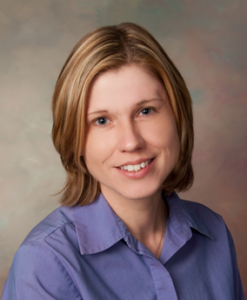
Antje Mefferd
Associate Professor
- : antje.mefferd@vanderbilt.edu
- : (615) 936-5105
- :
MCE South Tower
1215 21st Avenue South
Nashville, Tennessee - 37232
Education:
- Certified Speech Language Pathologist, 2000, Schule für Logopädie, (Kreischa, Germany)
- M.A., 2004, University of Nebraska-Omaha, NE
- Ph.D., 2008, University of Nebraska-Lincoln, NE
Biography:
Antje Mefferd, PhD CCC-SLP, is an assistant professor in the Department of Hearing and Speech Sciences at Vanderbilt University Medical Center. She teaches courses in speech acoustics and perception. Prior to her academic position, she worked as a speech language pathologist in Germany and the US and treated predominantly individuals with neurogenic speech, language, and swallowing disorders in acute care settings.
Dr. Mefferd’s research focuses on speech physiology and the impact of neurological diseases on speech production. One of her main goals is to better understand the speech motor impairments of speakers with dysarthria and how these impairments contribute to the speech acoustic deviancies and speech intelligibility loss. Another main goal is to better understand the articulatory mechanisms that underlie improved speech acoustics and speech intelligibility in response to behavioral modifications, which are currently frequently used to treat dysarthria.
To investigate these topics, Dr. Mefferd uses motion capture technology to quantify speech motor performance and speech acoustic analyses to determine the acoustic consequences of speech movements. Her lab is equipped with a six-camera optical Motion Analysis System (Motion Analysis, Inc.), an Electromagnetic Articulograph (AG501; Carstens Medizinelektronik, Germany), professional audio recording equipment, a Biopac System (Biopac Systems, Inc.), and PC workstations.
The Electromagnetic Articulograph (EMA) is a relatively new instrument for the study of speech movements inside of the mouth. Small sensors are attached to the surface of the tongue, lower teeth, and lips to capture tongue, jaw, and lip movements during speech production. Speech movements can be seen in real time on a computer screen. Optical motion capture technology is commonly used to produce animation movies (e.g., The Polar Express, Avatar). Here at Vanderbilt, this technology helps to identify speech performance deficits that need to be particularly targeted in speech treatments and to track small performance changes over time that may not be detectable to the listener’s ear. Finally, the Biopac system is used to examine other speech physiologic measures such as muscle activity (EMG), airflow, and pressure during speech.
When not researching and teaching, Dr. Mefferd enjoys going on adventure trips with her husband and kids, gardening, cooking, sports, and freshwater aquariums.
